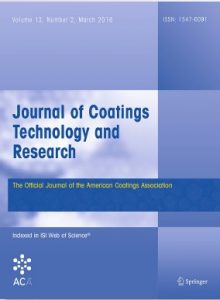scientific journals
Investigation on electrostatic assist and gravure process parameters on solid mottle reduction for shrink films
Akshay V. Joshi, Christoph Dettke & Joseph Steingraeber
Abstract:
Gravure is a high throughput printing process, normally associated with speed, quality, and long print runs. It is widely used for printing on shrink films and other substrates. The shrink films, in particular, polyvinyl chloride (PVC) and glycol-modified polyethylene terephthalate (PET-G), are two dominant substrates widely consumed and printed by gravure process. The PVC and PET-G offer different properties which greatly influence the printability. The surface energy of the substrate determines the adhesion and wettability of ink, while electrical properties such as surface and volume resistivity impact electrostatic assist (ESA) performance. The introduction of ESA in gravure further improved the print quality by eliminating dot skips with reduced impression pressure. However, print defects such as print mottle is inevitable. Print mottle occurs due to a discrepancy between substrate, ink, and process parameters which degrade the print quality. These complexities need to be addressed to deliver higher productivity with less print waste. Therefore, the study investigates the effect of process parameters, i.e., substrate type, line screen, air gap (distance between charge bar and impression roller), viscosity, voltage, and speed, and aims to quantify their effect numerically on defect minimization. The Design of Experiments (DOE) was generated for the above-mentioned parameters and analyzed to extract the best combination of process parameters. The optimized setting showed a reduction in solid mottle by 54% and 57% for PET-G and PVC, respectively.

